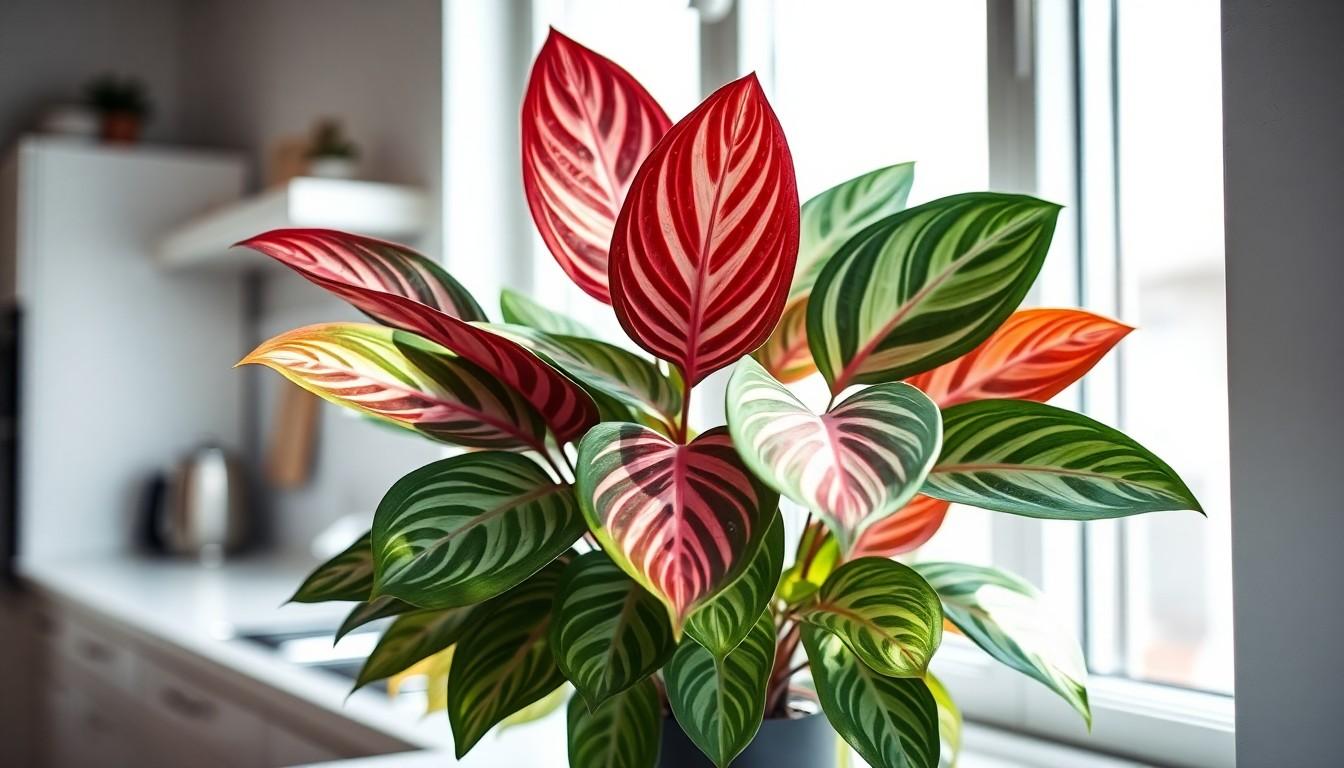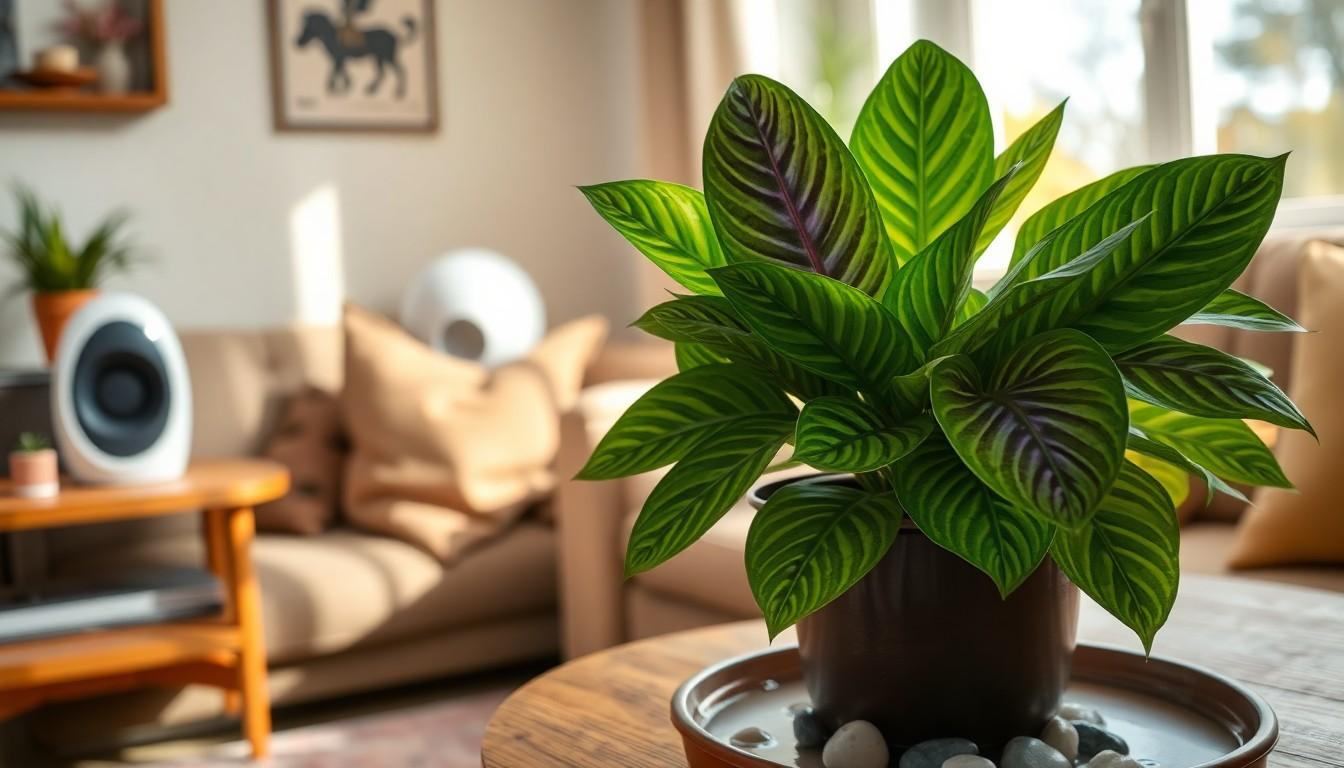Phone:
(701)814-6992
Physical address:
6296 Donnelly Plaza
Ratkeville, Bahamas.

If you’re on the hunt for a plant that’s as charming as it is low-maintenance, the Maranta plant might just steal your heart. Known for its stunning, patterned leaves and unique habit of folding up at night, this beauty doesn’t just sit pretty—it adds a splash of personality to any space. But don’t let its good looks fool you; caring for a Maranta is as easy as pie, or at least easier than finding a parking spot in a crowded lot.
With a bit of know-how, anyone can keep their Maranta thriving. From understanding its love for humidity to mastering the art of watering without drowning it, this guide will equip you with everything you need. So grab your watering can and let’s dive into the delightful world of Maranta plant care! Your new leafy friend is waiting for a little TLC.
The Maranta plant, also known as the prayer plant, captivates with its striking appearance and unique leaf movements. They fold their leaves at night, giving an enchanting display of nature’s wonders.
Several popular varieties of the Maranta are known for their distinctive patterns. The Maranta leuconeura ‘Kerchoviana’ boasts dark green leaves adorned with silvery veins. Another variety, the ‘Fascinator,’ features vibrant red veins on its leaves. The ‘Erythroneura,’ or red maranta, displays a stunning combo of deep green and red hues. Each type showcases the plant’s unique beauty while maintaining similar care requirements, making them suitable for various indoor environments.
Maranta plants are recognized for their broad, oval-shaped leaves that exhibit vibrant colors and intricate patterns. Their ability to fold leaves at night distinguishes them from many houseplants. This movement aligns with the plant’s natural circadian rhythm, enhancing its appeal to enthusiasts. Leaf colors include shades of green, deep red, and silver, creating an eye-catching effect. Additionally, Maranta plants thrive in high humidity, making them ideal for bathrooms or kitchens. Their compact size, typically reaching 12 to 18 inches in height, fits well in small spaces, adding a lively touch to home decor.

Maranta plant care involves several essential requirements to promote its health and growth. Understanding specific needs can ensure a thriving plant.
Maranta thrives in bright, indirect light. Direct sunlight may scorch its leaves, causing damage. She prefers filtered light, making a spot near a north or east-facing window ideal. Insufficient light may lead to leggy growth. Therefore, observing the leaf color can indicate if the light conditions are suitable. Deep hues indicate happiness, while pale colors suggest a need for brighter light.
Watering the Maranta requires careful attention. The soil should remain consistently moist but never soggy. Allowing the top inch of soil to dry out between waterings promotes healthy roots. Ideally, using room temperature water helps avoid shock. During the growing season, more frequent watering is essential, while less frequent watering suffices in winter. Overwatering may cause root rot, so drainage holes in the pot are crucial for excess water removal.
High humidity is critical for the Maranta’s well-being. A humidity level of 50% or more works best for this plant. Using a humidifier or placing a tray of water with pebbles beneath the pot can achieve optimal levels. Daily misting is another effective method to elevate humidity. Leaf tip browning can signal insufficient moisture in the air. Regularly checking humidity levels helps keep the plant flourishing.
Choosing the right soil mix promotes Maranta growth. A well-draining potting mix enriched with organic matter is ideal. Regular fertilization during the growing season provides essential nutrients. Using a balanced liquid fertilizer diluted to half strength every 4-6 weeks will support healthy development. Ensure to avoid over-fertilization, as this can lead to salt buildup, harming the roots. Replacing the top layer of soil annually can improve nutrient availability.
Maranta plants, while relatively easy to care for, can encounter certain issues. Addressing these problems promptly ensures the plant remains healthy and vibrant.
Spider mites pose a prevalent threat, particularly in dry conditions. Regularly inspecting the undersides of leaves helps identify these pests early. Neem oil serves as an effective treatment for infestations, providing a natural remedy. Aphids also affect Marantas, causing distorted leaves. Introducing beneficial insects, like ladybugs, can naturally control aphid populations. Regularly wiping leaves with a damp cloth aids in preventing pest buildup and promotes overall cleanliness.
Root rot emerges from overwatering, leading to mushy roots. Ensuring well-draining soil and allowing the top inch of soil to dry out before watering can prevent this issue. Fungal infections often occur in high humidity, manifesting as leaf spots. Utilizing a sterilized potting mix minimizes the risk of introducing pathogens. Maintaining good air circulation around the plant prevents mold growth. Regularly checking for yellowing leaves may indicate stress or disease, allowing for prompt attention and care adjustments.
Caring for Maranta plants ensures they stay lush and vibrant. Understanding key maintenance practices makes all the difference.
Pruning the Maranta encourages fuller growth. Regularly remove yellow or dead leaves to maintain appearance and health. This process improves air circulation, reducing the risk of disease. It’s beneficial to prune in spring when the plant enters its active growth period. Making clean cuts with sanitized tools minimizes stress to the plant. Routine maintenance also includes checking for pests, ensuring that the leaves remain free from dust, which promotes optimal photosynthesis.
Repotting a Maranta every 1 to 2 years promotes healthy root development. Choose a slightly larger pot each time, providing ample room for growth. Spring serves as the ideal season for this task, aligning with the plant’s growing season. Inspect the roots during repotting for any signs of rot or pests, addressing issues immediately. Use a well-draining potting mix to support moisture retention without causing sogginess. After repotting, give the plant time to adjust before resuming regular care practices.
Caring for a Maranta plant can be a rewarding experience that brings beauty and vibrancy to any space. With its stunning foliage and unique characteristics it’s no wonder this plant has captured the hearts of many. By following the essential care tips outlined, anyone can successfully nurture this delightful houseplant.
Maintaining the right humidity levels and providing bright indirect light will ensure the Maranta thrives. Regular pruning and pest management will keep it healthy and beautiful. Embracing the nuances of Maranta care can lead to a flourishing plant that enhances both indoor aesthetics and overall well-being.